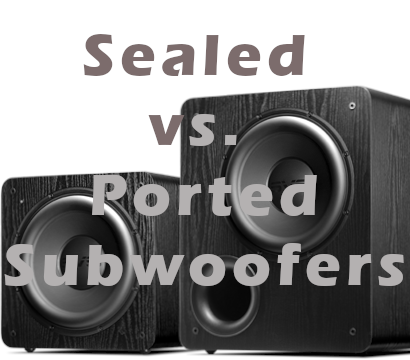Sealed Vs Ported Subwoofers In A Small Room
For many, building a home theater is about compromises. You can’t afford new speakers right now, so you buy used. Tower speakers won’t fit, so you get bookshelf speakers. Or space is limited, so you purchase smaller sealed subwoofers, not ported monsters. In the case of the latter, will that be a deal-breaking proposition? Everyone knows that for maximum boom, ported subwoofers are the way to go, especially in a big room. But what about in a small room? Today I explore sealed vs ported subwoofers in a small room. Will it suck? Let’s discuss.
The Test And Prep
Let’s get to the elephant in the room. I am a lazy enthusiast. I established my laziness early though. It also means that I am not going to pull out REW and start to take measurements. I will use a “calibrated” ear, and some years of experience to hear if there is a significant difference. I don’t doubt there will be measurable differences, but the ones we care about should be pretty self-evident. Plus, I am going to use a series of test materials (both music and movies) that I am familiar with. I know how they will sound on a properly calibrated system.

The Gear
I have dual SVS PB-1000 Pro’s. Wait a second, PB means ported box! You are correct. They ship with port plugs and have a sealed mode. Thus making them (gasp) sealed subs. While they are not designed as sealed subs, they are pretty close to an SVS SB-2000 Pro with a 19-240Hz range in sealed mode. The major difference between the two will be the 325W of power vs 550W for the SB-2000 Pro. The app makes it a snap!
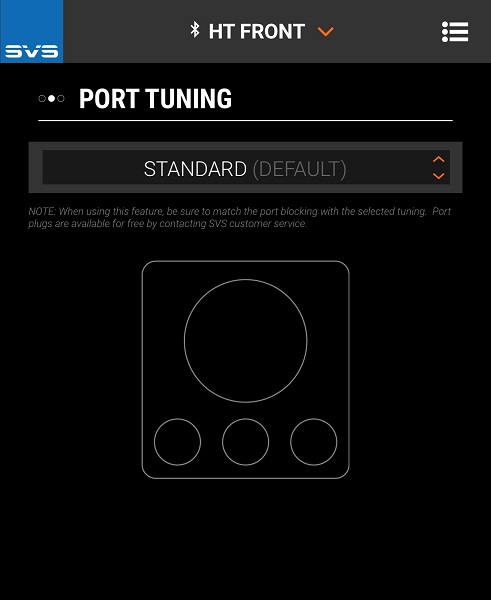
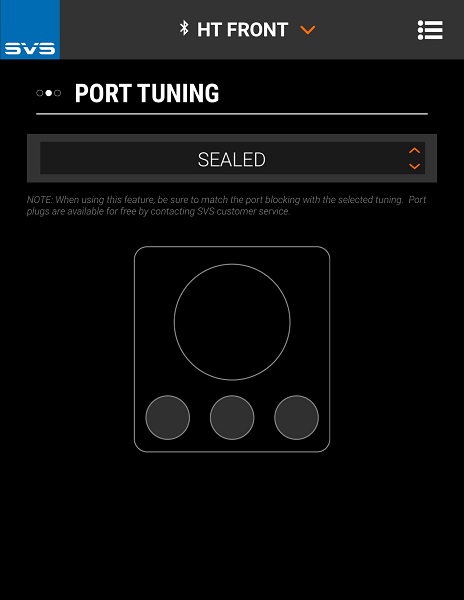
Lastly, my room correction is Dirac. I have the standard version that comes with my Onkyo TX-NR7100. My goal is to keep everything as apples-to-apples as possible for the test. That means I will have them in the same place, level-matched, and not boost anything from Dirac. I have limited placement for my subwoofers, so I am not going to do a subwoofer crawl. Plus moving them could change the results dramatically between test.
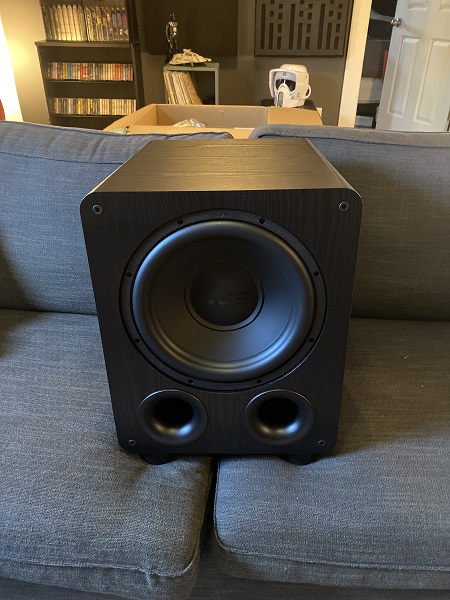
Setup and Calibration
Setup took me about an hour. I sealed my subs, level-matched them, ran Dirac, and uploaded the file to Slot 2 with no alterations. Here is where I noticed the first difference. Before running Dirac, I level-matched my subs. In ported mode, -18dB gain gets me to the 75dB (combined) level. Sealed, I had to boost the gain to closer to -13dB to get the same volume. Same results with the AV receiver. In ported mode, the trim was set to -6dB, and sealed to -2dB. Again, this tells me that the sealed sub needs more amplifier power to get to the same output as the ported variant.
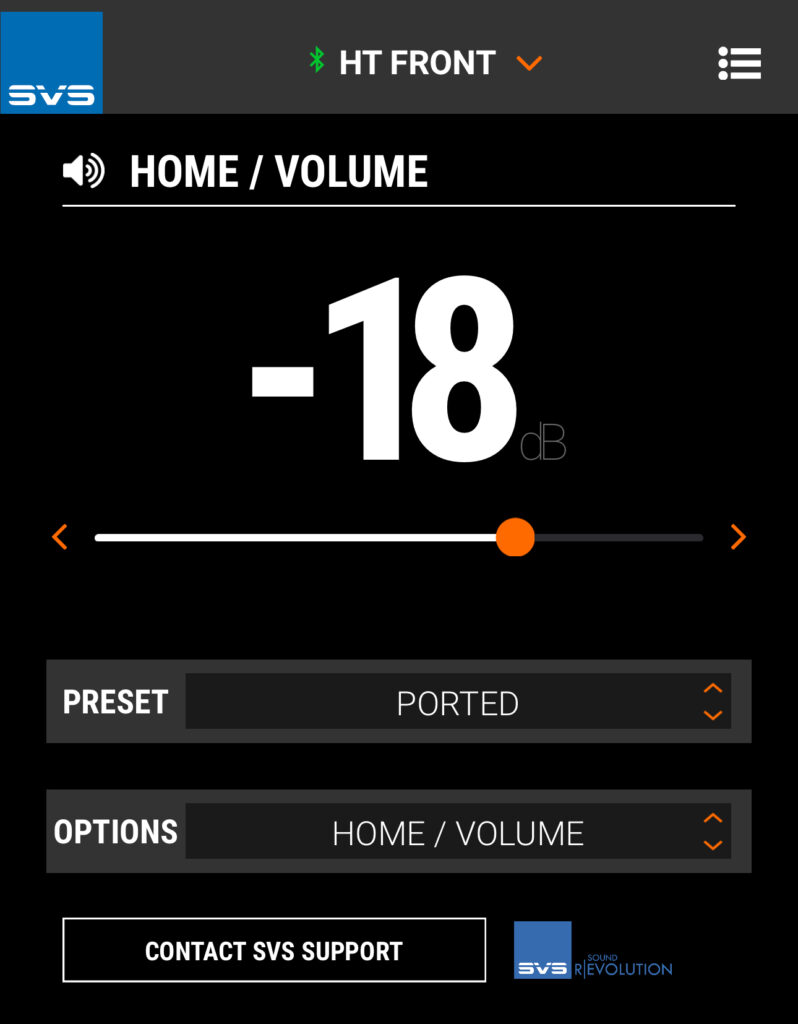
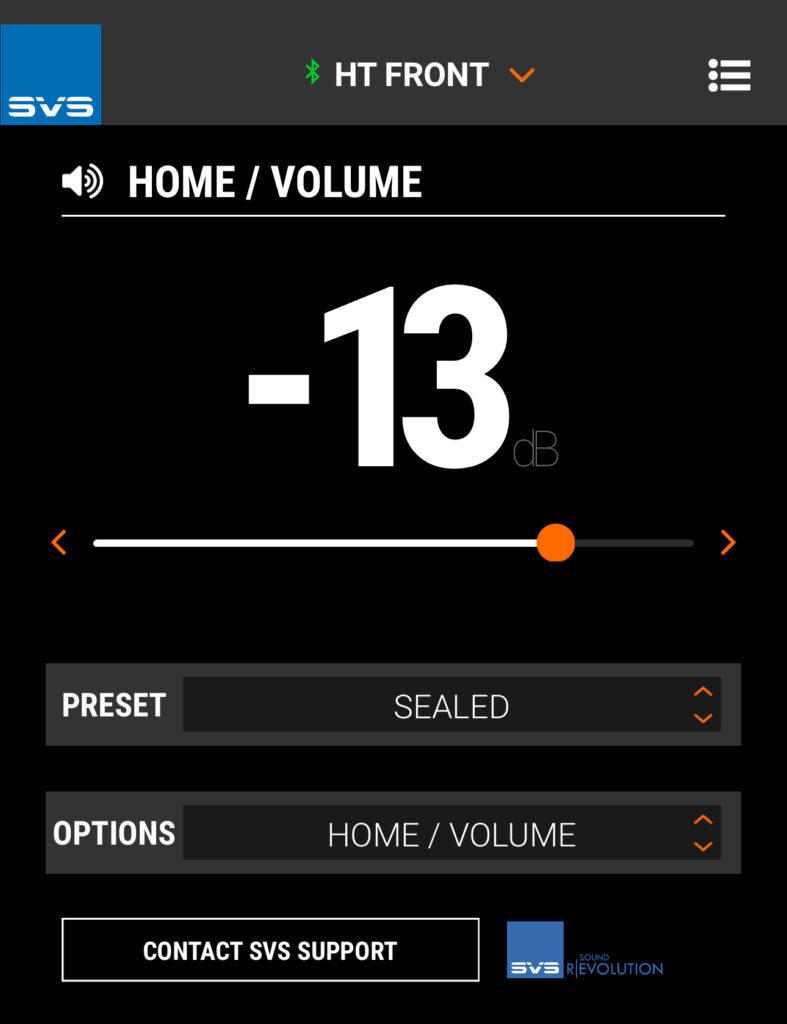
Editor’s Note: Generally speaking, we don’t recommend running ported subwoofers in sealed mode. If you wanted a sealed sub, you should have bought one. As you can see from Andrew’s tests, the ported subwoofer needed additional amplifier power for it to reach the same output when sealed. The sealed version of the 2000-series subwoofers from SVS indeed has a larger amplifier. If your ported subwoofer is struggling to fill your space with bass, sealing it will make your problems even worse.
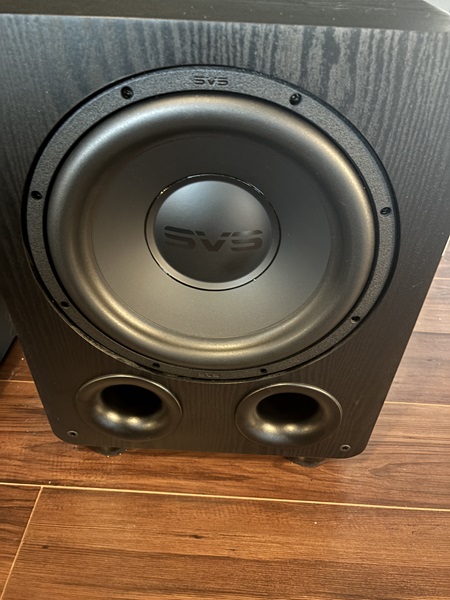
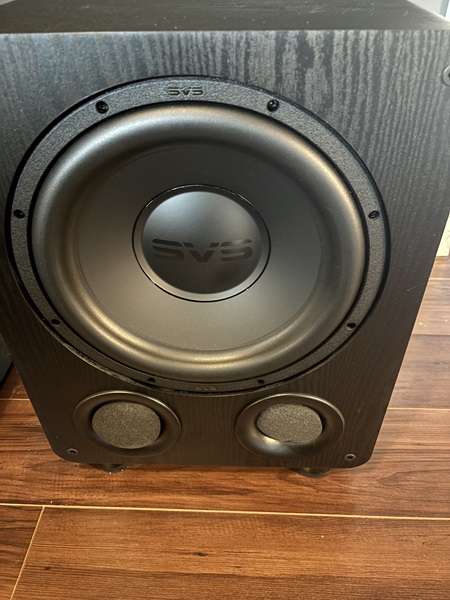
The major issue I face is psychology. I did a thing, so my brain was expecting to hear a difference. I can hear some of you screaming “Take a measurement dummy!” but I refer you back to my statement on being very lazy! Calibrated ear it is! However, in an attempt to add some objectivity to this test, I had a fellow enthusiast come over. I showed them how to seal the subs and swap Dirac profiles in my AV receiver and we ran the test for me blind (never mind experimenter bias). That’s right, I didn’t know what was what. We ran the scenes four different times and they chose at random how to configure the subs.

My test movies included Edge of Tomorrow, Pacific Rim, Godzilla, Ready Player One, and the explosion from the opener in No Time To Die. Music was a mix of rock, jazz, hip-hop, and alternative. I feel this gives me enough material to get a good comparison upon which to base my decisions.
The Room
My small room is 13x21X8′ (2184 cubic feet). That’s not a lot of space to handle for a decent subwoofer, so I don’t need a ton of extra output. Furthermore, I placed sound absorption panels around my room. What does this mean for the test? Once set up properly, with room correction run, I should get the best from my subwoofers, sealed or ported.
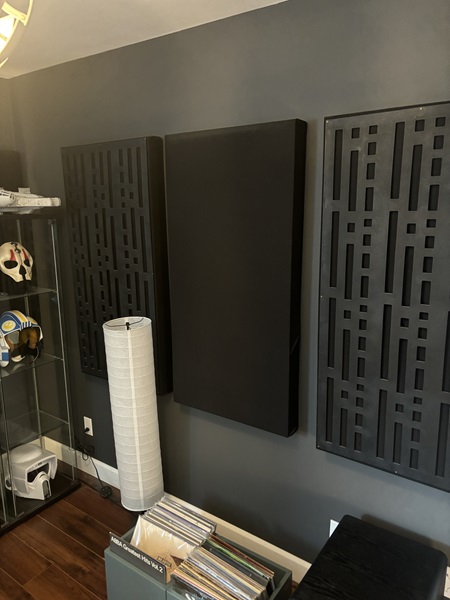
My room and subwoofers follow Rob H’s 12-Step Guide To Dual Subwoofers. I can’t set up my subs across from one another, so I have the front one in the far right corner. The rear one is diagonal to the front, close to the rear left corner. However, I don’t get that boundary re-enforcement the front one gets. That said, they are both close(ish) to my main seat because I have a small room.
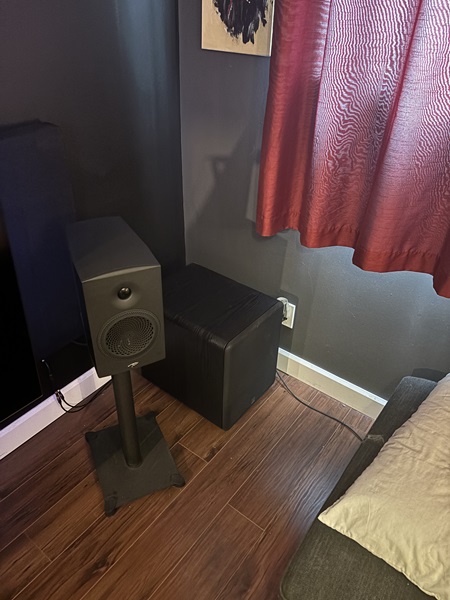
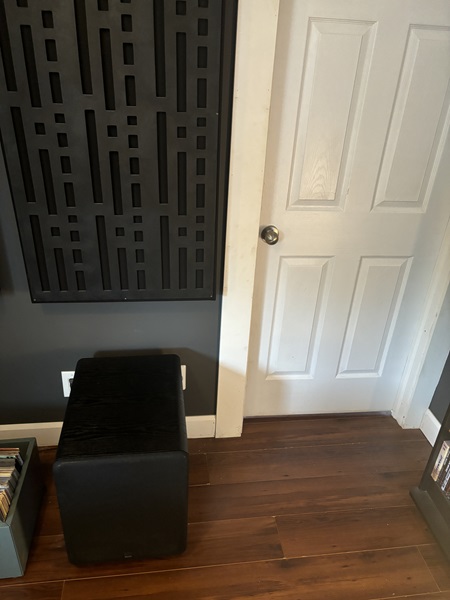
The Results
The million-dollar question is, “Was there a noticeable difference?” Not a bit! Of the four tests that we ran, I got one of four correct. Statistically, I was worse than guessing – I had a 50/50 chance of being right! If I wasn’t lazy, I would have run 10 tests. But, in defense of my laziness, each test ran about 30 minutes, plus setup time. All in all, I dedicated about four hours of my day (plus taking Dirac measurements) to this “experiment”.
| The Results | ||
| Test | Configuration | My Guess |
| 1 | Ported | Sealed |
| 2 | Sealed | Ported |
| 3 | Sealed | Ported |
| 4 | Ported | Ported |
I tried my hardest to keep in mind all the subjective reports people have claimed about ported vs sealed subwoofers (speed, musicality, etc.). I also used what I knew to be true about sealed subwoofers. They have faster roll-off than ported ported subwoofers so I tried to listen for that added extension. Unfortunately, that extension is below 20Hz which is beyond the range of human hearing. But maybe I could feel it? Heck, I listened for port noise to tell if it was plugged. I know that’s cheating, but it didn’t matter. In the battle of sealed vs ported subwoofers in a small room, I can admit that I was guessing.
What about my AV enthusiast assistant? He selected the modes and had an advantage. That said, he admitted that he had a hard time picking out differences, despite knowing the configuration. That’s right folks. TWO AV enthusiasts in a room, and they both agreed on something. Write that down!
But Why?
The small cubic footage of my room, combined with a pair of good subwoofers and lots of power. That’s why! As I repeatedly said, I have a small room in home theater terms. I could (and did) get away with having a single sub in that room. The SVS PB-1000 Pro is capable of playing down to 19Hz in sealed mode and still has more than enough output to kick me in the chest. Add a pair of them? Easy peasy!

Room correction software is designed to EQ and level-match all gear to a standard. I know you are shocked! This means that as long as the subwoofer is capable of hitting the frequency, and has enough power to play it loud enough, they should sound the same. Once you are able to hit that magical 20Hz mark, sealed or ported, it doesn’t matter, you won’t hear below that. The small room makes it easier to hit that Reference Level peak of 115dB (for a subwoofer).
At the end of the day, a good subwoofer is a good subwoofer. Sealing my SVS PB-1000s didn’t make them quieter, less impactful, or “faster” than when I have them in ported mode. Simply put, sealed subs in my 2200 cubic foot room are more than enough.
Our Take
Even though I had a strong assumption of what the outcome would be, I like to be able to run low-cost experiments like this so I can speak from experience. When I browse the forums, I see so much misinformation being passed on to newcomers. Sealed subwoofers are always recommended when I see a discussion about sealed vs ported subwoofers in a small room. Now I can wade in and dispel that!
However, at the end of the day, we are down to Home Theater 101. A sealed subwoofer that is not capable of reaching 20Hz can not compete with a ported one that can. However, if you invest in capable subwoofers, and match their size and output to your room, sealed or ported becomes a moot point. Now it becomes a discussion about size, cost, or type.
What about you? Have you ever experimented with ported vs sealed in your room? What was the result? Tell us in the comments below.

